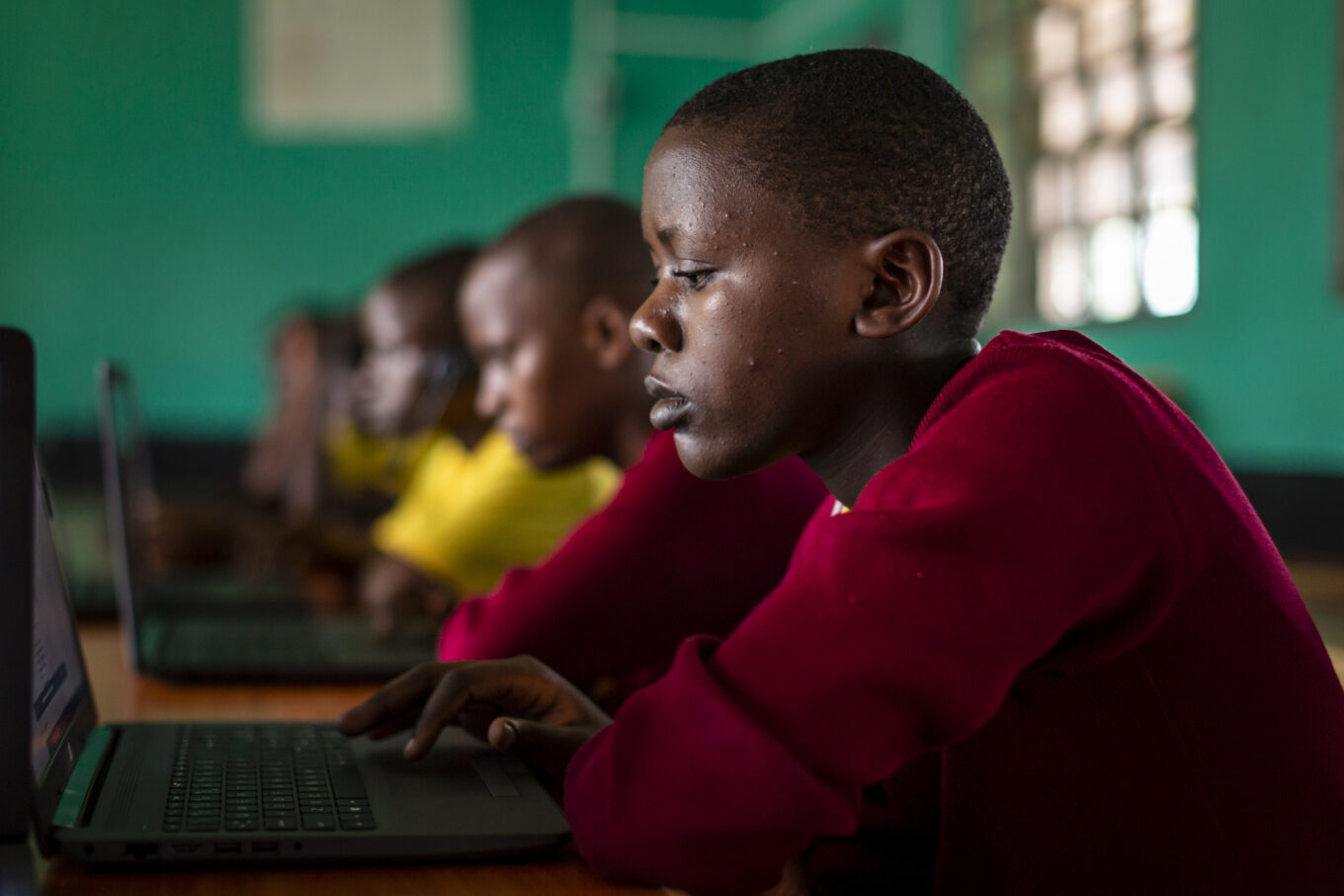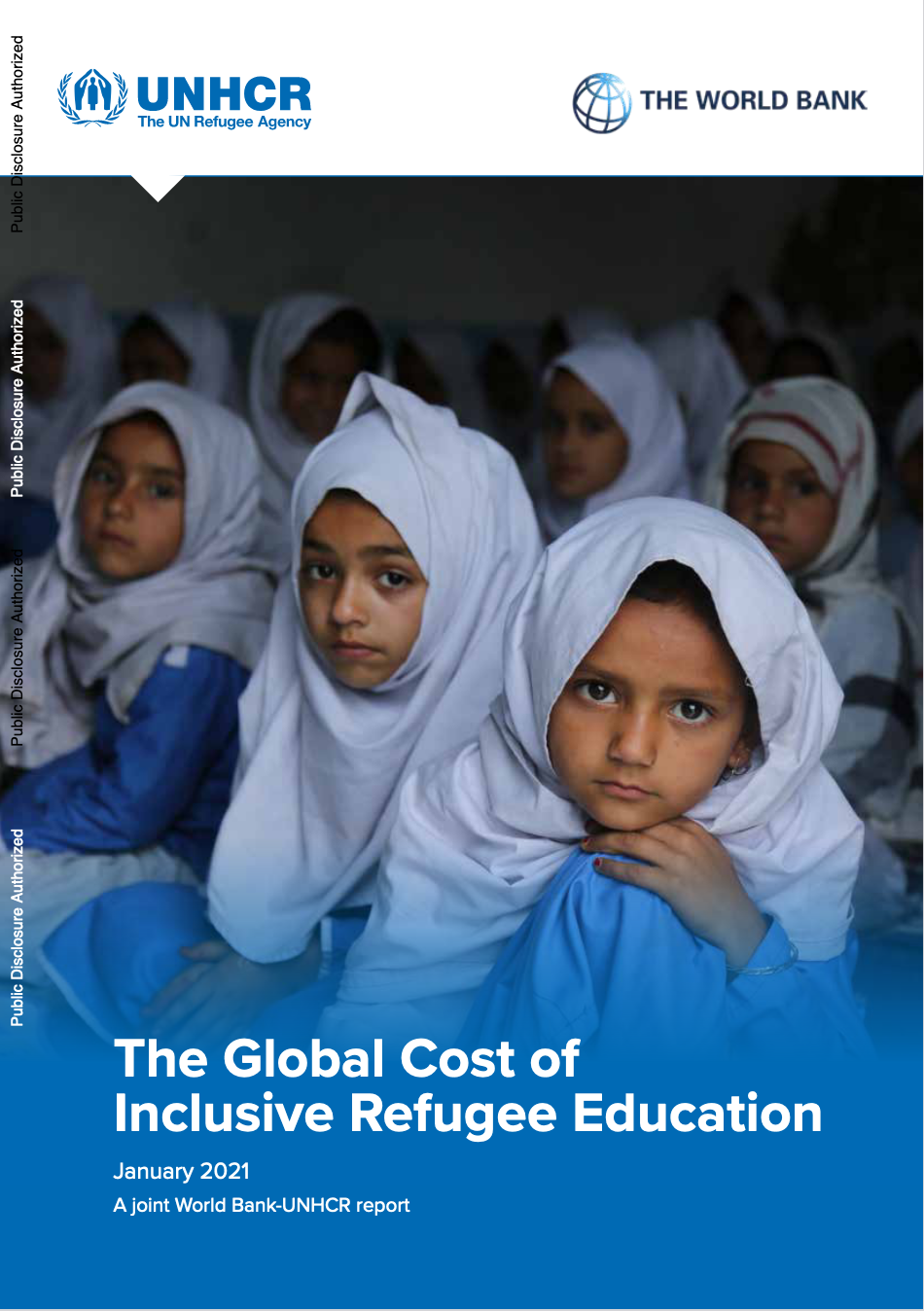by Mamta Murthi, World Bank’s Vice President for Human Development. and Raouf Mazou, UNHCR’s Assistant High Commissioner for Operations

At the end of 2019, there were 79.5 million people living in forced displacement, accounting for 1 per cent of the global population. Among them were 26 million refugees, half of whom were below the age of 18. A large share of these children have lived in situations of protracted crises, which means they often spend a substantial number of years, if not the entirety of their schooling years, in displacement. Providing quality education for refugee children is of paramount importance to their future self-sufficiency. Further, education can help overcome the trauma of conflict and forced displacement by supporting coping mechanisms and providing a sense of stability. It has positive spillover effects for state- and peace-building and reduces the risks associated with having a “lost generation”.
Yet, for millions of children this is not the reality. Refugee populations are concentrated in developing countries that are themselves stretched to deliver education. The education systems of these host countries are not adequately equipped to improve the learning outcomes of their own children or to respond to the large influx of refugee children and their specific education needs. There are often additional challenges at sub-national levels as refugees are often settled in poor and vulnerable communities where education services are relatively low-quality. The COVID-19 pandemic is likely to further exacerbate learning inequalities. Providing quality education for refugee children will require a concerted effort from the international community, host governments, and refugee and host communities.
The Global Compact on Refugees has placed enhanced responsibility-sharing at the center of the international refugee protection agenda. It commits stakeholders to specific measures toward that goal, including on measuring their contributions. In response, the World Bank and UNHCR, in consultation with host country governments, have developed a standardized and transparent methodology to estimate the cost of educating all refugees worldwide.
The report on the Global Cost of Inclusive Refugee Education provides this estimate, set against a policy environment that promotes the development of inclusive national education systems. The report is supported by a data dashboard where host countries can review refugee enrollment and annual cost projections.
The report estimates that the average cost of providing education to all refugee students in low, lower-middle and upper-middle income host countries is US$4.8 billion annually. A sensitivity analysis, relaxing model assumptions, suggests the estimate lies in the range of US$4.4 billion and US$5.1 billion. An additional US$443 million is the estimated annual cost for delivering education to Palestinian refugee children under UNRWA’s mandate. While these figures appear to be large, in more than half of the countries studied, refugee education cost estimates account for less than 1 percent of annual public expenditure on primary and secondary education. A few countries are outliers (South Sudan – 61 percent, Lebanon – 58 percent, and Jordan – 16 percent) reflecting large refugee influx and/or limited public expenditure on education. Beyond financing, the report calls for strengthening the capacity of host governments to develop and implement efficient national inclusive education plans. These plans would need to take the special needs of the local governments facing the refugee influx into account.
Ultimately, the report gives a message of hope: while providing education to all refugee children presents a considerable endeavor, the global estimate on “what it would take” is not out of reach.
Importantly, these figures represent a pre-COVID baseline of the estimated costs of educating all refugees and are likely to increase as the impacts of the pandemic continue to unfold. We do not know yet by how much.
What’s behind the numbers? The report uses a costing methodology based on the premise that refugee education is embedded in the host country education system— facing the same cost drivers, and efficiency and quality constraints. As such, the public unit cost of education in each country, supplemented by a multiplier or mark-up for the specific educational needs of refugee children and youth, then drives the cost. The report provides additional details on the methodology including assumptions and agreed approaches, proxies, omissions, and challenges with incomplete data sets.
Ultimately, the report gives a message of hope: while providing education to all refugee children presents a considerable endeavor, the global estimate on “what it would take” is not out of reach of the collective efforts of the international community and host governments. This report is a crucial step towards understanding the needs of refugees and host countries, developing an adequate framework for response, and catalyzing renewed discussions around responsibility-sharing.
This article was also published on the World Bank Blogs.

